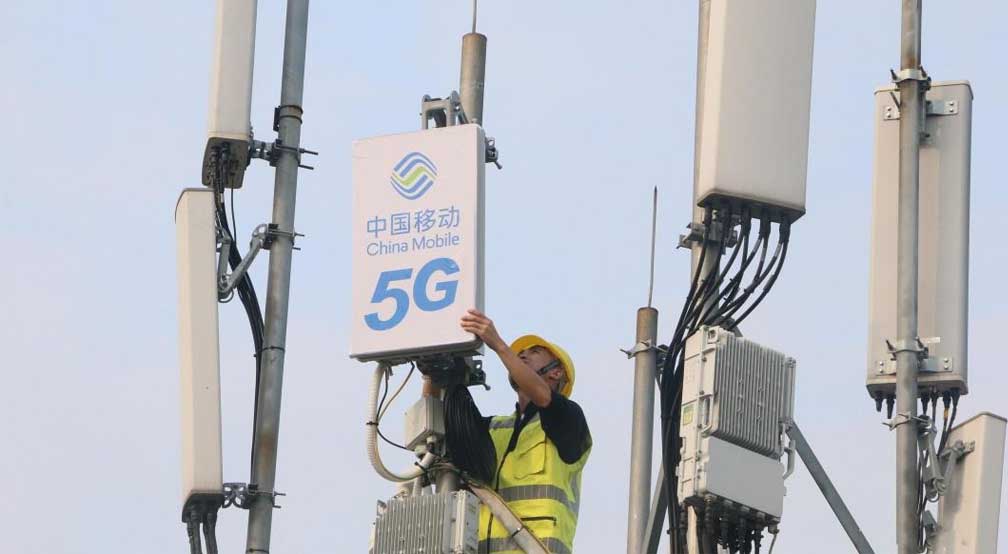The Rapid Growth of 5G Technology in China: Insights and Future Trends
As of April 2024, China's telecommunications landscape has undergone a remarkable transformation with the establishment of 3.748 million 5G base stations. This achievement translates to over 26 5G base stations for every 10,000 people, alongside the construction of more than 30,000 dedicated 5G industry networks. According to Zhao Zhiguo, Chief Engineer of the Ministry of Industry and Information Technology, China holds over 42% of the global essential patent declarations for 5G standards. This positions mobile communication, particularly 5G technology, as one of the most innovative and widely integrated technological fields today.
By embracing advancements like those offered by companies such as CAZN, stakeholders can ensure they remain at the forefront of this digital revolution—unlocking new possibilities for growth and efficiency across all sectors.

The Impact of 5G on Economic Integration
With the advent of 5G technology, the integration of digital and physical worlds is accelerating. A recent report from the China Academy of Information and Communications Technology (CAICT) reveals that 5G has covered 74 out of 97 major categories in the national economy, achieving an industry penetration rate exceeding 76%. This rapid adoption has fostered a positive environment where leading enterprises drive smaller companies to expand their use of 5G applications across various sectors.
Current Market Landscape for 5G
5G, or fifth-generation mobile communication technology, is not merely a standalone wireless access technology but rather an evolution of existing technologies (including 2G, 3G, 4G, and WiFi). It integrates new supplementary wireless access technologies to enhance connectivity solutions. The continued expansion of 5G networks has progressed from connecting counties to reaching villages, ensuring extensive coverage across rural areas.
China has also taken significant steps by being the first globally to release a mid-band frequency spectrum plan for 5G and achieving large-scale deployment of independent networking (SA). Furthermore, it pioneered inter-network roaming for 5G, which has begun commercial promotion.
Collaborative Efforts in Network Deployment
The deployment of 5G networks adheres to principles of co-construction and sharing. China Telecom and China Unicom have collaborated to build the largest and fastest 5G SA (standalone) network in the country. Currently, there is continuous coverage for all towns and above, with effective coverage extending to administrative villages.
According to Zhao Jingbao, Deputy General Manager of China Tower Corporation, the current share ratio for 5G infrastructure stands at 95%, with new base station sharing rates significantly increasing to 85%. This collaborative approach has led to a reduction in the need for additional towers by approximately 1.12 million, saving over 200 billion yuan in investments and conserving around 60,000 acres of land.
The Expanding Applications of 5G
According to a report by Zhongyan Puhua Industrial Research Institute, as of now, 5G has penetrated into 74 categories within the national economy with an industry user scale exceeding 30,000. Key sectors such as smart cities, healthcare, and education have seen significant growth, with over 1,000 users in each category. Notably:
- The application ratio of 5G in major coastal ports across the country reaches 92%.
- In leading coal and steel enterprises, application ratios stand at 95% and 85%, respectively.
Scaling Up in Key Industries
The mining, electricity, and healthcare sectors have successfully replicated large-scale applications of 5G technology. In industrial settings, the use of 5G is advancing from peripheral processes towards core functions such as research design and manufacturing.
To facilitate this transition, there is a strong emphasis on top-level design planning that leverages policy guidance to promote the systematic development of new information infrastructure like mobile communication and optical broadband.
Future Trends in the 5G Market
Zhu Keli, Executive Director of the China Information Association and Founder of the National Research Institute for New Economy, emphasizes that a proactive approach in building infrastructure ensures that network capabilities keep pace with market demands. This foresight prevents missed opportunities due to network delays.
Driving New Productivity with 5G
The maturity of commercialized 5G technology provides robust support for cultivating new productive forces in China. The high-speed rates, low latency, and massive connectivity features inherent in 5G enable widespread applications within industrial internet frameworks. This advancement promotes smart manufacturing and networked upgrades while accelerating digital transformation across service industries such as smart cities and telemedicine.
Addressing Fragmentation in Demand
As industries increasingly integrate digital technologies with traditional manufacturing processes, challenges remain regarding fragmented demand versus scalable services. Zhang Wanchun, Senior Vice President at ZTE Corporation, highlights ongoing efforts to explore how 5G-A can better empower the real economy through innovative applications.
ZTE has already initiated an industry-first fully flexible production line utilizing all-5G-A technology at its Binjiang factory. Early results indicate a reduction in fault repair cycles by up to 30%, showcasing how advanced connectivity can enhance operational efficiency.
Conclusion
The rapid expansion of 5G technology in China marks a significant milestone in telecommunications development. With millions of base stations deployed and extensive industry penetration achieved, the foundation for future innovation is firmly established.
As we look ahead, collaboration among telecom operators and industries will be crucial in maximizing the benefits of this transformative technology.









